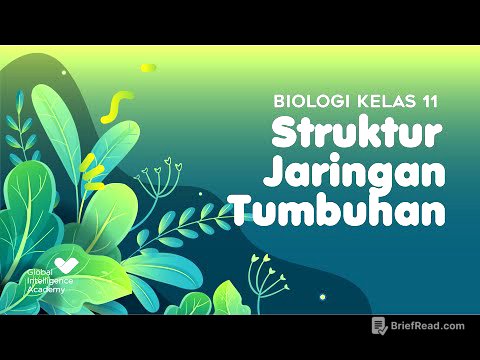TLDR;
This lecture provides an overview of flexibility and mobility in sports, highlighting their importance, influencing factors, and roles in athletic performance. It distinguishes between flexibility (passive range of motion) and mobility (active range of motion), discusses factors affecting flexibility such as joint structure, age, gender, and muscle properties. The lecture also covers the benefits of flexibility training, sport-specific flexibility demands, biomechanical aspects, and methods for assessing flexibility. It explains the physiological basis of stretching, detailing the roles of muscle spindles and Golgi tendon organs, and describes different stretching techniques (static, dynamic, PNF) with guidelines for their application in athletic training and rehabilitation.
- Flexibility is a foundational component of movement, essential for athletic performance.
- Factors such as joint structure, age, gender, muscle and connective tissue, stretch tolerance, neural control, resistance training, and activity level affect flexibility.
- Flexibility training improves movement efficiency, reduces muscle stiffness and injury risk, and enhances performance.
- Different stretching techniques (static, dynamic, PNF) have specific effects and applications in athletic training and rehabilitation.
Introduction: Flexibility and Athletic Performance [0:15]
The lecture introduces the concept of flexibility as a foundational component of movement, defining it as the ability to move joints through their full range of motion. It highlights the importance of flexibility in athletic performance and sets the learning objectives, which include understanding flexibility, its importance, factors affecting it, its role in athletic performance, and practical applications through case scenarios.
Flexibility vs. Mobility [1:28]
The lecture distinguishes between flexibility and mobility, defining flexibility as passive range of motion achieved through external forces without active muscle involvement. Mobility, on the other hand, is defined as active range of motion, involving both muscle and neural components, making it a dynamic neuromuscular process. Flexibility is considered a subset of mobility, with both being essential but distinct for athletic performance.
Factors Affecting Flexibility [3:28]
Several factors influence flexibility, including joint structures, where anatomical configurations can limit movement. Age and gender also play a role, with flexibility decreasing as age increases and females generally being more flexible due to hormonal differences. Muscle and connective tissue properties, stretch tolerance, neural control, resistance training, and activity level all contribute to an individual's flexibility. Normal range of motion doesn't guarantee normal movement, as movement also involves active motor control and proprioception.
Benefits and Sport-Specific Demands of Flexibility Training [6:35]
Flexibility training offers several benefits, including improved movement efficiency, reduced muscle stiffness, decreased risk of injury, and enhanced posture and technique. However, excessive flexibility can reduce stability, so optimal range, not maximal flexibility, is key. Flexibility demands vary by sport, with gymnasts requiring a broader range of motion than powerlifters. Overhead athletes need excessive shoulder range of motion compared to runners.
Biomechanical Aspects of Flexibility Training [10:09]
Limited flexibility leads to compensatory mechanisms in the body, increasing stress on vulnerable areas like the lower back and knees. Proper flexibility reduces these compensation patterns, improving force transfer and joint alignment, thereby reducing injury risk. Sport-specific biomechanics require attention to joint angles and force generation within particular ranges of motion. Overhead athletes, for example, may experience scapular dyskinesis and restricted internal rotation due to excessive external rotation.
Assessing Flexibility [13:34]
Assessing flexibility is crucial for identifying imbalances and guiding training programs. Quantification helps compare an individual's flexibility to their baseline, the opposite side, or normative data for their sport. Common assessment methods include the sit and reach test, goniometry for measuring joint angles, and functional movement screens to evaluate active movement patterns.
Physiological Basis of Stretching [16:35]
Flexibility is enhanced through stretching exercises, which are neurologically controlled. Muscle spindles, located within intrafusal muscle fibers, detect changes in muscle length and trigger the stretch reflex, causing muscle contraction. Golgi tendon organs (GTOs), located at the muscle-tendon junction, sense increased force production and activate the inverse stretch reflex, causing muscle relaxation to protect against tendon avulsion.
Types of Stretching and Their Impact on Athletic Performance [20:49]
Three main types of stretching are static, dynamic, and proprioceptive neuromuscular facilitation (PNF). Static stretching involves sustained stretches held for 15-30 seconds, activating the inverse stretch reflex through GTOs, and is best used in cool-downs to reduce injury risk. Dynamic stretching involves movement, activating muscle spindles and the stretch reflex, making it suitable for warm-ups. PNF stretching combines isometric and concentric muscle activations with passive stretches, requiring a partner and expertise, and is effective for rehabilitation.
Guidelines for Flexibility Training and Injury Risk [26:03]
A basic static stretching program should target major muscle groups two to three times a week, holding stretches for 15-60 seconds. Programs should be designed according to sport-specific demands, using dynamic stretches in warm-ups and static stretches in cool-downs. PNF stretching can be used for injured joints or muscles with a partner. Imbalances, especially in cyclical sports, can lead to chronic overuse injuries, requiring assessment and targeted interventions like dynamic or static stretching.
Common Myths, Specific Considerations, and Case Study [28:45]
Common myths about flexibility include the idea that more flexibility is always better and that stretching prevents all injuries. Specific considerations include avoiding stretching in cases of joint instability, acute injury, or post-operative tissues without expert guidance. A case study of a javelin thrower with shoulder pain illustrates the importance of assessing and addressing biomechanical asymmetries through targeted stretching exercises, particularly focusing on posterior shoulder capsule stretches.
Summary [32:04]
Flexibility in athletic performance is enhanced by static stretches in cool-downs to reduce injury risk and dynamic stretches in warm-ups to improve performance. PNF stretching is predominantly used in sports rehabilitation. Biomechanical asymmetries due to sport demands should be addressed through flexibility assessment and training, which also corrects imbalances and improves force transfer.









![15 Kdramas SO AMAZING They Make Everything Else Seem Like Trash! [Ft HappySqueak]](https://wm-img.halpindev.com/p-briefread_c-10_b-10/urlb/aHR0cDovL2ltZy55b3V0dWJlLmNvbS92aS9KVE1Cem9SRzdEMC9ocWRlZmF1bHQuanBn.jpg)